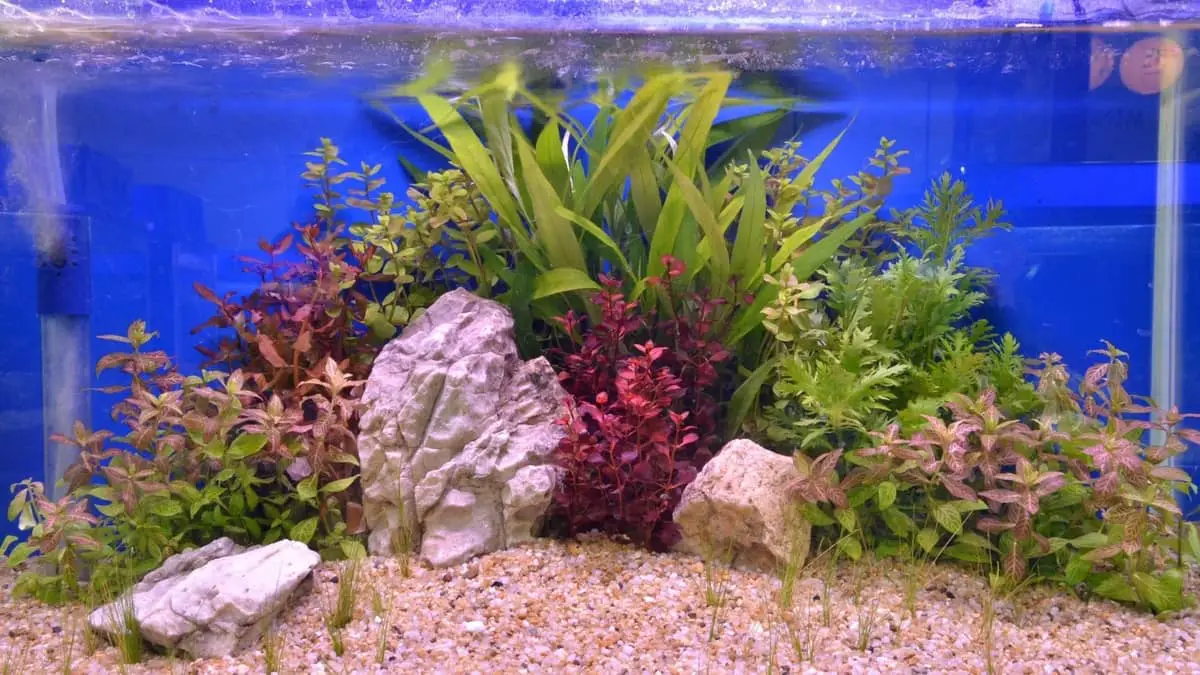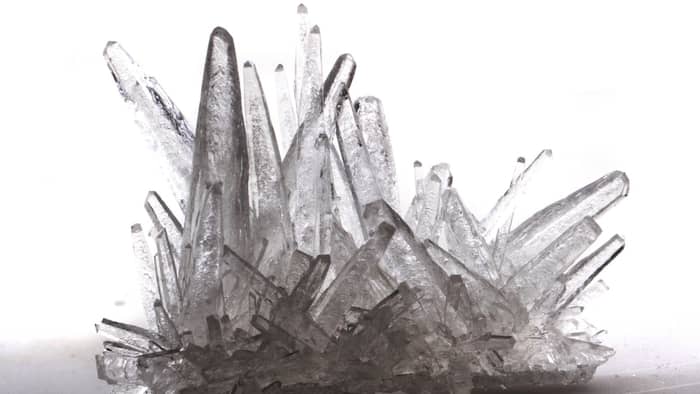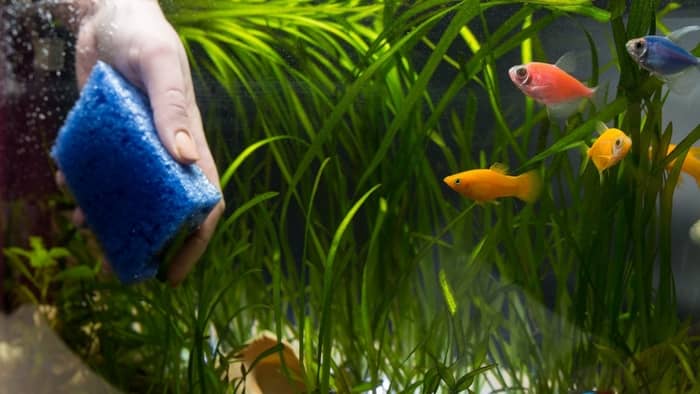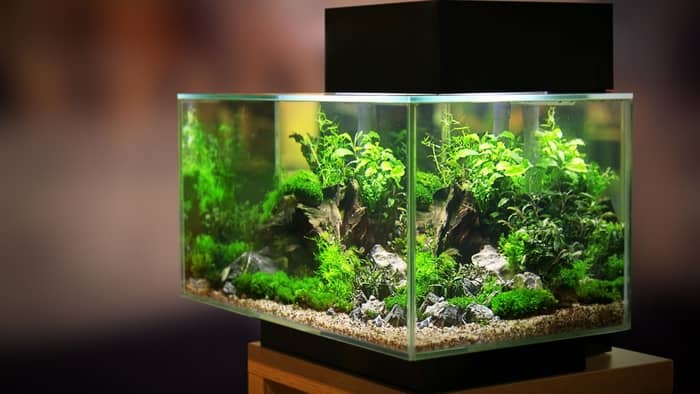Last Updated on March 28, 2022 by admins
How to lower phosphates in the aquarium? Can regular water changes really affect phosphate levels? Stay with us and find out.
Maintaining stable water parameters is of utmost importance for maintaining a healthy and happy aquatic world. Unfortunately, these parameters often vary, creating an imbalance.
Have you noticed that phosphate levels have suddenly increased and are now wondering what to do? Keep reading and learn how to lower phosphates in the aquarium.
What Are Phosphates?
To begin with a scientific explanation, phosphate is an anion, salt, functional group, or ester derived from phosphoric acid. It probably sounds too complicated, so we will try to bring it closer to you.
Phosphates are present in every aquarium, but in most cases, the owners are not aware of it at all. – Given that all living organisms contain phosphorus, it is no wonder that this is the case. They can be created within the closed aquatic system or imported from some other external source.
Many often wonder where these phosphates come from. The simplest way to explain this is that phosphates are one of the most important elements of life, as an integral part of cell membranes, a source of energy, as well as a key part of many biochemical processes.
Accordingly, phosphates occur as a by-product of mineralization of dead matter such as plants, bacteria, fish waste, uneaten food, as well as many other processes.
Ideal Phosphate Level
Elevated phosphate levels are generally closely related to algae growth. Accordingly, if you want to prevent their excessive concentration, the ideal levels are 0.2 mg / L or less. As for the presence of phosphate in the aquarium tank, it can be present in both organic and inorganic forms and can be tested with a variety of test kits designed specifically for that purpose. However, keep in mind that such tests can only test for inorganic phosphate. So, you are basically just testing a portion of the total phosphate in your aquarium.
Read more about test kits that can provide insight into the condition of your tank.
What Are The Effects Of Phosphate On The Aquarium Environment?
The good news is that phosphates are not harmful to aquarium pets. However, this doesn’t mean that if it reaches a higher level you do not have to react.
As already mentioned, higher levels have an impact on algae blooms, which is ultimately not at all desirable for your inhabitants. So, for example, green water can change the pH of the water and lower oxygen levels, which can harm fish.
This is why many wonder “how to lower phosphates in the aquarium”. Keep reading to find out the answer.
A Short Guide On How To Lower Phosphates In The Aquarium
The best, and at the same time the simplest way to reduce phosphate in an aquarium is to never let it get high in the first place. However, there are several options if your phosphate level is already too high. Therefore, follow some or all of these steps.
Regular Water Changes
Regular and major water changes will help bring phosphate down quickly. However, they will not be permanent if the cause of the problem is left behind. It would be good to stick to this until you eliminate the cause of the problem.
It is also recommended to test your tap water (if you are filling your tank with it) as some cities have phosphates in their drinking water. In case your tap water contains phosphates, the only solution is to use filtered or distilled water with the addition of buffer.
Cleaning Your Aquarium Tank
One of the answers to the question “how to lower phosphates in the aquarium” is cleaning. Try to regularly scrub the inside of the aquarium glass as well as rocks and other decorations. Also, don’t forget to give the substrate good gravel vacuuming. Lastly, do not skip cleaning the filter media in order to remove trapped algae.
Phosphate Absorber
Phosphate absorbing media should be among the last steps you take if you want to reduce its levels as it involves the use of chemicals. It is very effective and can be added to virtually any filter.
Phosphate Binder
The use of a phosphate binder is also one of the answers to the question “how to lower phosphates in the aquarium”. It is added to the water in order to cause the phosphate to precipitate out of the solution. Phosphate binders can be purchased at almost any fish store. The most important thing is to start carefully and in small doses. Namely, if you add too much of this liquid chemical, the aquarium water can turn white which can eventually affect the health of the fish.
In Conclusion
That would be it, now you know how to lower phosphates in the aquarium.
Most important of all is to have a multi-angled approach to solving this problem. Accordingly, try to be regular and thorough in aquarium maintenance, get quality water filtration, and low aquarium bio-load. All of this is essential for keeping phosphate levels low.
We hope you found this article useful. If you have any questions, please let us know in the comments.
FAQs
How Do I Lower Phosphates In My Fish Tank?
You can reduce your phosphate level in one of the following ways:
Regularly change the water,
Maintain your aquarium (cleaning, scraping, and vacuuming),
Use chemicals designed for this purpose.
How Do You Get Rid Of Phosphates?
If you do not want to try one of the more natural methods of removing phosphate from the aquarium, you can always resort to chemical compounds. Phosphate absorber and phosphate binder are excellent choices to solve this problem.
What Causes Phosphate In Fish Tanks?
Phosphate is a completely natural product found in aquariums. It appears as a by-product of the decomposition of various types of waste, including uneaten food, decaying plants, and fish excrement.
Will Water Changes Lower Phosphates?
Yes! Changing the water can lower the phosphate level in your aquarium tank, but only temporarily because it is necessary to discover the cause of the problem.




